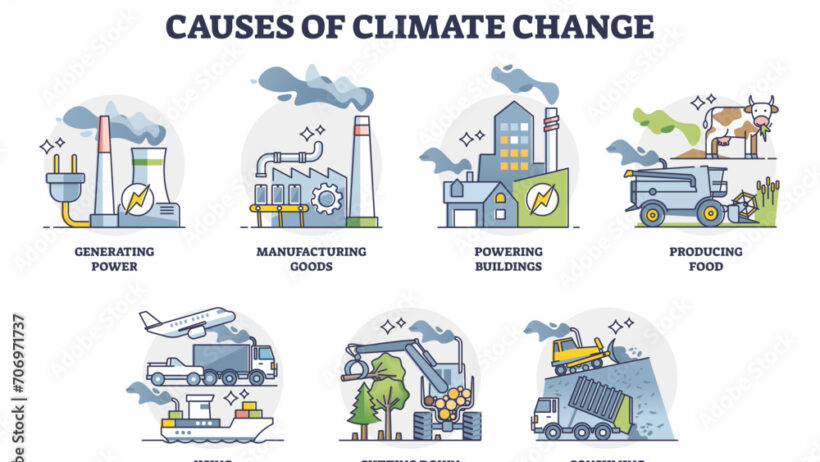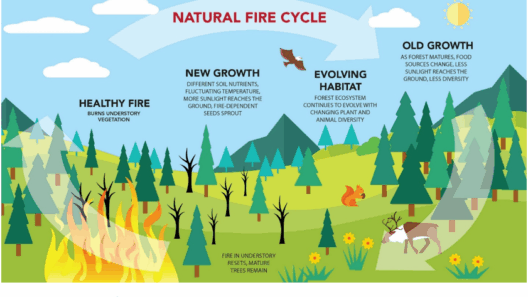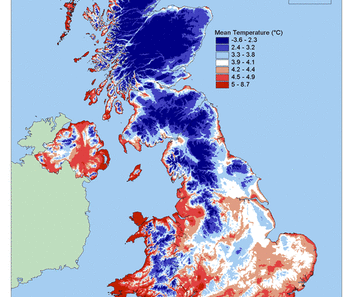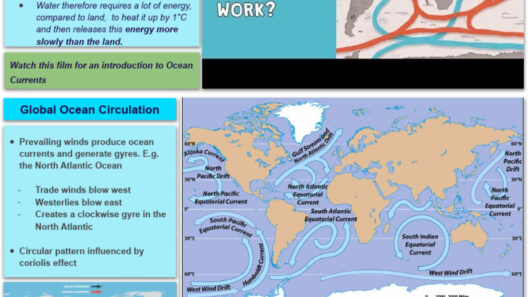The intricate tapestry of climate change and global warming is woven from a multitude of factors, both natural and anthropogenic. To grasp the full picture, one must delve into the scientific nuances and societal implications that underlie this pressing issue. Global warming refers primarily to the rise in Earth’s average surface temperature due to increased concentrations of greenhouse gases (GHGs) in the atmosphere. Among these gases, carbon dioxide (CO2), methane (CH4), and nitrous oxide (N2O) take center stage in the dialogue surrounding climate change.
At the heart of the scientific discourse is the greenhouse effect—a phenomenon whereby certain gases trap heat from the sun in the Earth’s atmosphere. While this effect is a natural process that allows our planet to maintain temperatures capable of supporting life, human activities have amplified this effect to hazardous levels. In fact, since the Industrial Revolution, the concentration of CO2 in the atmosphere has surged from approximately 280 parts per million (ppm) to over 400 ppm, a staggering increase that portends catastrophic repercussions.
One primary driver of this alarming escalation is the combustion of fossil fuels. As societies industrialized, coal, oil, and natural gas became the backbone of energy production. Power plants, automobiles, and industrial facilities all release copious amounts of CO2 when fossil fuels are burned. The nexus of metabolism and production in modern economies hinges on fossil fuel consumption, which is intricately linked to energy policies and consumption patterns. In essence, the relentless pursuit of economic growth has come at the steep price of environmental sustainability.
Deforestation also plays a pivotal role in exacerbating global warming. Trees and vegetation naturally sequester carbon dioxide, acting as crucial carbon sinks. Yet, vast swathes of forests are felled for agricultural expansion, urban development, and logging activities. This not only releases stored CO2 but also diminishes the Earth’s capacity to absorb future emissions. The phenomenon is particularly pronounced in tropical regions, where biodiversity-rich rainforests serve as a bulwark against climate change—a bulwark that is rapidly dismantling.
A further insidious contributor to climate change is agriculture. The sector is responsible for significant emissions, particularly through livestock production and the use of nitrogen-rich fertilizers. Methane, a potent greenhouse gas, is emitted during digestive processes in ruminants and from manure management practices. Moreover, the application of synthetic fertilizers leads to the release of nitrous oxide, another gas characterized by its high global warming potential. The intricacies of agricultural practices reveal their dual role: while they are fundamental to feeding a burgeoning global population, they are also substantial contributors to climatic instability.
Industrial processes can’t be overlooked in this complex matrix. Beyond energy production, many industrial activities emit GHGs directly. The production of cement, steel, and chemicals involve chemical reactions and high temperatures that contribute to emissions. Additionally, refrigerants used in cooling systems are often potent greenhouse gases, complicating the fabrication of a sustainable industrial landscape.
The natural world, however, is not merely a passive backdrop to human activity; it can both contribute to and mitigate climate change. For instance, melting permafrost in Arctic regions releases previously trapped methane, amplifying the effects of climate change. Similarly, alterations in weather patterns can affect carbon storage in ecosystems. Ecosystems might shift, and species may migrate or face extinction, further disrupting the delicate balance of carbon cycles on which the planet relies.
Climate change is exacerbated by a feedback loop—a cycle where initial changes trigger further responses. As temperatures rise, polar ice caps and glaciers melt, leading to higher sea levels that threaten coastal communities and ecological systems. Warmer oceans contribute to more intense and frequent storms, disrupting both human settlements and marine ecosystems. This cyclical nature of climate interactions reveals a profound vulnerability in social and ecological systems, demanding immediate and decisive action.
In considering potential solutions, it is imperative to pursue transformative change at multiple levels. At the individual level, reducing energy consumption through lifestyle choices such as utilizing public transportation, reducing meat consumption, or increasing energy efficiency can collectively yield significant benefits. On a systemic level, transitioning to renewable energy sources—such as solar, wind, and hydroelectric power—can catalyze a seismic shift in the energy paradigm, countering carbon emissions and promoting sustainable development.
Furthermore, policy mechanisms aimed at curbing emissions are critical. Implementing carbon pricing, enhancing energy efficiency standards, and supporting reforestation efforts can create economic incentives that align with ecological imperatives. Education, advocacy, and public awareness campaigns can galvanize community engagement, transforming complacency into action.
The quest to understand and address climate change reflects a larger pursuit of equity and justice. Vulnerable populations disproportionately bear the brunt of climate repercussions, often lacking the resources to adapt to changing conditions. Climate justice, therefore, emerges as a crucial dimension of the conversation surrounding climate change. Solutions must not only mitigate the immediate impacts of global warming but also ensure that marginalized communities are supported and empowered in this process.
To encapsulate, the causes of global warming and climate change are an interplay of natural phenomena and human activities. Acknowledging and comprehending this complexity is essential for fostering effective solutions. As societies contemplate their collective future, a paradigm shift towards sustainable practices and a recognition of interdependence will ultimately lay the groundwork for a resilient planet. Embracing this challenge with informed curiosity can cultivate a renewed commitment to environmental stewardship, offering hope for generations to come.







